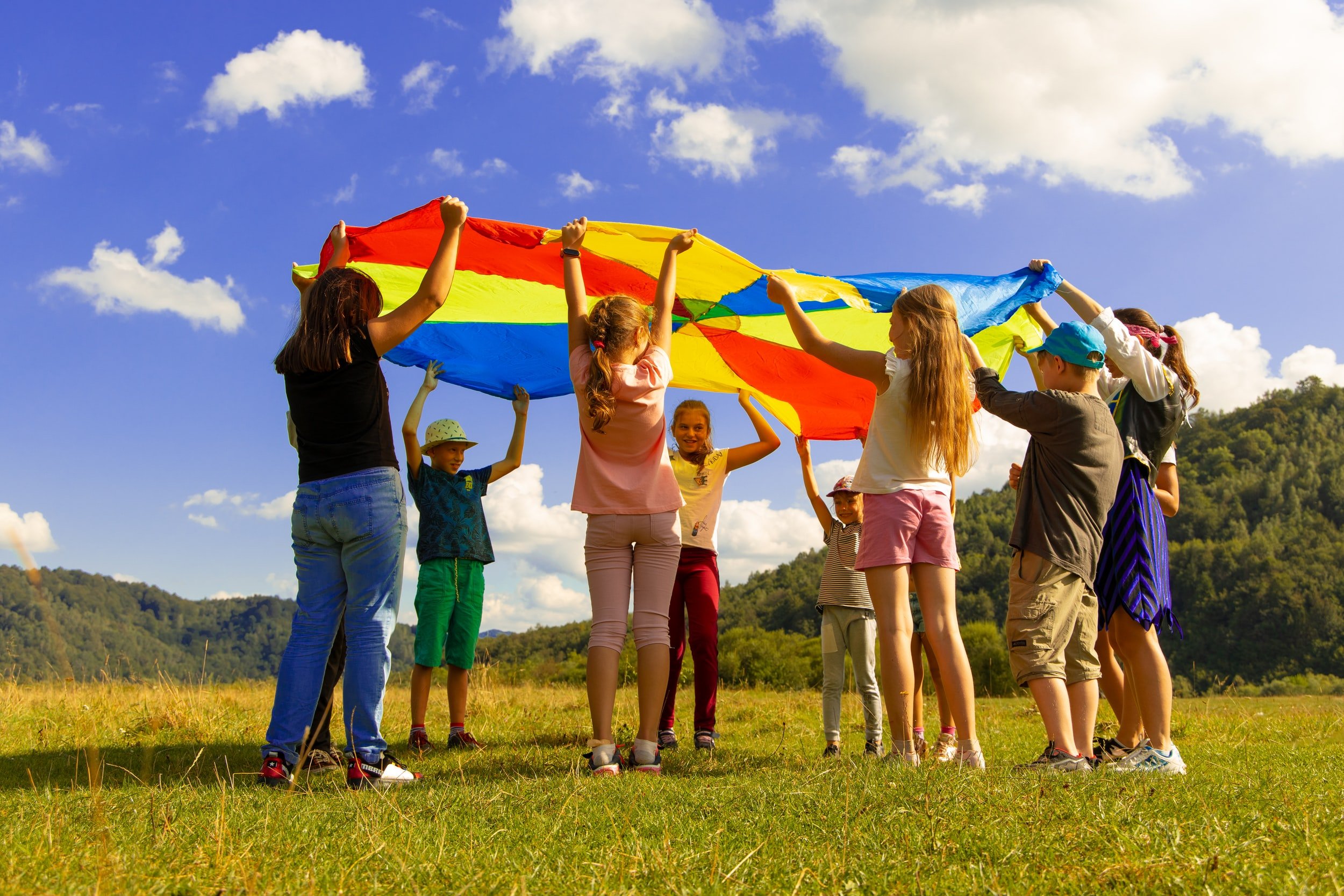The Importance of Play
“Play is the birthplace of personhood - it is how the self is born psychologically. Play isn’t about putting information into a child, but about drawing out a child’s ideas, intentions, aspirations, preferences, wants, and wishes.
Young children need to emerge from early childhood with a sense of self that has been forged from hours spent lost in play. “Play is the act of self-creation.” - Dr. Macnamara, Rest Play Grow
“Play is a process that is freely chosen, personally directed, and intrinsically motivated. All children and young people need to play. The impulse to play is innate. Play is a biological, physiological, and social necessity, and is fundamental to the healthy development and well-being of individuals and communities.” - Play England
Play is critical to children’s emotional, social, physical, and cognitive development. Research tells us young children learn best through meaningful play experiences.In the early years, play fosters:⠀
Language and reasoning skills⠀
Neurological development⠀
Life experiences to aid in comprehension⠀
Imagination⠀
Problem solving⠀
Fine and gross motor skills⠀
Coordination⠀
Self-control
Self-confidence and self-esteem⠀
Outdoor Play
“Outdoor play gives an infant the opportunity to develop their senses” and “introduces the environment…they live in.” - University of Missouri
Fresh air help oxygenate our cells, which makes us feel more energetic and happy. A 2011 Swoss study of five year olds showed that aerobic fitness improved children’s attention spans and motor skills, which result in better working memory - crucial components to academic success.
Regular breaks for children to play outside help children’s ability to learn.
When children engage their senses in outdoor play, they strengthen their sensorial skills and make stronger neural connections in the brain.
“The available research suggests that recess can play an important role in learning, social development, and health of elementary school children.” - Olga Jarrett, Georgia State Univeristy
ALL CHILDREN NEED PLAY
to forward development and realize their potential
to find and express their true selves
to program the brain’s problem solving networks
to preserve psychological health and well-being
to find their creative edge and responsibility
to practice life in a space free of consequences
Dr. Gordon Neufeld, Making Sense of Play
HOW PLAY IMPACTS LITERACY
In Finland, formal reading instruction does not begin until first grade at age seven. Finland is considered the most literate country in the world. Norway, Denmark, Iceland, and Sweden account for the top five literate countries in the world (as of 2016). All of these countries have something in common: a commitment to play in the early years. On average, children in these countries play outside 1.5 hours in the winter months and 6 hours per day in the summer months.
Play increases a child’s cognitive skills and ability to problem solve, think abstractly, and think critically. Engaging in pretend play strengthens narration skills, comprehension, emotional and social intelligence, empathy, creativity, and questioning.
NOT ENOUGH PLAY
One cross-sectional study of four million children in the US showed that roughly half of all preschoolers don’t have daily outdoor time, even though the American Academy of Pediatrics recommends “children play outside as much as possible.” By the time they reach their teens, only 10% of American children spend time outside every day, according to the Nature Conservancy.
Not surprisingly, obesity, ADHD, diabetes and other behavioral and learning problems have increased rampantly.
1 in 2 children in the United States have a diagnosed chronic illness.
Obesity in children in 1980 was 6%. It is now 18.5%
11% of all American children are currently diagnosed with ADHD. Over half are medicated. Prevalence of ADHD has increased 33% since 1997.
Development of myopia (nearsightedness) increased 42% in 2004.
{Source: CDC}
Children that are not getting enough time to free play actually start their academic careers with a disadvantage. They are more likely to be clumsy, have difficulty focusing and controlling their emotions, utilize poor problem-solving methods, and demonstrate difficulties with social interactions.
Unfortunately, many preschools are moving away from play-based programs to more academic programs. This, as well as the rise of screens and technology usage is causing a serious increase in sensory, motor, and cognitive issues. In 2017 there was a 30% rise in occupational therapist referrals.
Research has found play-based preschool programs have MORE lasting effects on a child’s academic and social development than academic-based preschool programs. It is possible to prepare our children for kindergarten and support their developmental needs through books, conversations, and play. ⠀

There are six main types of play
Unoccupied play: mostly observational; child (typically infants) move their body because it feels interesting
Independent play: child plays alone
Onlooker play: child observes others playing
Parallel play: child plays beside, rather than with another child or adult
Associative play: child plays with others and shares materials, but they are not all working towards a common goal
Cooperative play: child plays with others working towards a common goal⠀ ⠀
Risky Play
“Risk-taking is an essential part of children’s play. Managing that risk is the key to providing opportunities that support growth and development and keep children safe from unreasonable risk and injury. The balancing of these two is vital for our children’s health and development. (Allen and Rapee, 2005 cited in Sanseter, E. and Kennair, L. 2011)
Everyday life is full of risks and challenges and children need opportunities to develop the skills associated with managing risk and making informed judgements about risks from a very young age.
Risky play helps to develop important life skill learnings such as;
• Building resilience and persistence
• Balance and coordination
• Awareness of the capabilities and limits of their own bodies
• The ability to assess and make judgement about risk
• Handling tools safely and with purpose
• Understanding consequence to action
• Confidence and independence
• Resourcefulness
• Creativity and inventiveness
• Curiosity and wonder
• Problem solving
Each child is unique and so the level of risk and challenge they seek will also vary, yet most children will actively seek risk and challenge in play as they explore the world around them and their own physical abilities.
ENCOURAGE MORE PLAY
Create safe, playful, inviting environments for kids to explore.
Consider rotating toys; too many toys or distractions can become over-stimulating. ⠀
Provide naturally occurring rich language experiences (have conversations, sing nursery rhymes, read together).⠀
Encourage outdoor play.⠀
Limit screen time.⠀
Provide open-ended materials and toys that spark imagination and problem-solving.
Try not to interrupt or distract the child while they are focused in play.
Let whatever children choose to do be enough. Trust the process.
Cultivate happier, more meaningful play!











